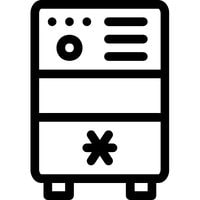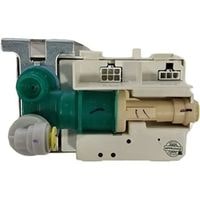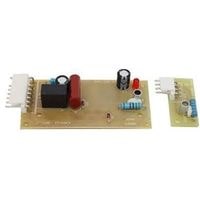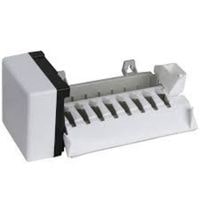Kitchenaid ice maker not working. KitchenAid Ice Makers mean ice is always at your fingertips…unless something goes wrong. In this case, it’s possible that ice production has simply been slowed down because the freezer settings might not be ideal.
If you wish to learn how to troubleshoot an ice maker in a KitchenAid refrigerator (and perhaps long-term solutions) read on.
You can also find out what might be causing your kitchen Aid Refrigerator Ice Maker to stop working and how you can fix it permanently.
Kitchenaid ice maker not working
Appliance repairmen spend a lot of time trying to figure out whether certain mechanical problems are caused by parts that require professional replacements or if they’re more of an oversight.
Fixing things yourself can be difficult, but as long as you’re patient and have the right tools at your disposal, you may have what it takes to do the job right without having to shell out significant amounts of money on unnecessary repairs.
KitchenAid Ice Maker Doesn’t Make Ice
Sometimes you have to get the repairs of your KitchenAid ice maker done by professionals. First, check to see if the refrigerator’s ice maker is on by doing a quick reset.
Lift the ice maker level up into the locked/off position, then release it back down into the on position. Check out these common issues to further diagnose the problem and see if you can find a resolution to fixing it on your own or if you need to call in some professional help.
Water Inlet Valve Not Working
If your KitchenAid ice maker isn’t functioning correctly, the cause might be a defective water inlet valve. The water inlet valve is electric and requires adequate water pressure to function.
If you have a faulty valve or not enough water pressure, the valve won’t open, and the ice maker won’t fill with water. With a multimeter, check for whether or not there is a current coming from the electric valve by pushing on the wires coming from it and putting probes around it.
If an indicating light shows up, then that means that there is power running through the wire, leading to your ice maker problem, so you will have to replace it using parts from a good electronics store nearby.
KitchenAid Freezer Temperature Issues
Your freezer temperature should fall within a certain range for your KitchenAid refrigerator’s ice maker to produce ice cubes.
If the temperature is too high (greater than 5℉ or 10℉), cube sizes or shapes may be smaller or misshapen. If the temperature is too low (less than 0℉), the appliance can become unable to dispense ice, and the ejection components can freeze while they’re still inside.
Faulty Ice Level Control Board
Some refrigerators come with automatic ice makers. This means that the refrigerator will automatically dispense ice at a user-determined interval.
Many of these models have a sensor or switch on them which tells the control board that more ice is needed–so when everything’s working as it should, you’re always getting just what you need as far as your daily supply goes.
When this type of switch isn’t functioning properly, many folks assume there is something wrong with the ice maker itself, but oftentimes, it’s just that the part that tells it to make ice properly needs to be replaced.
Water Filter is Clogged
We suggest checking the water filter if your ice maker is still making ice but less than normal. If you’ve had your filter for more than 6 months, then it could be time to replace it.
If you have a quality water filter installed, you will see that the water flow is much greater, which helps the ice maker to do its job efficiently.
Defective Door Switch
When the refrigerator door is open, the door switch turns off the ice and water dispensers. In the event of a failure, the dispensers will not operate.
Use a multimeter to test for continuity in the door switch when it is activated. If continuity is not detected, replace it.
Icemaker Mold Thermostat issue
The appliance icemaker mold thermostat monitors the temperature of the ice mold (icemaker). Once the mold reaches the proper temperature, the ice ejects and refills with water.
If the thermostat is defective, you will no longer receive ice. To ensure this is not the case, use a multimeter to test for continuity. If it does not have continuity, then you must consider replacing it.
Ice Maker Assembly problem
If your ice maker malfunctions and you can’t find any other apparent problems, testing shows that as a first step most likely it’s the fault of an electrical component.
If you’ve checked all the lines into the system, but nothing seems to be wrong with them in terms of air blocks or leaks (easily fixed) check to make sure there isn’t a failure in the icemaker’s internal components such as for example a faulty switch.
If after thoroughly checking things out the then I think it is high time you then go ahead and purchase a replacement part for your ice maker.
Kitchenaid ice maker not working
Related Guides
